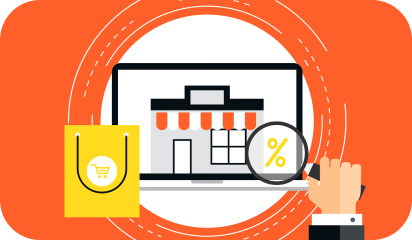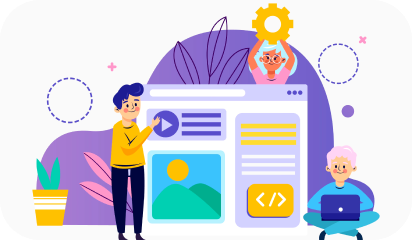Node.JS is increasingly getting popular amongst developers, so much so that 4 out of 5 developers rate Node.JS as their go-to choice for backend development.
In this blog, we will take a look at some of the best Node.JS frameworks. These frameworks are rated based on their popularity and unique toolsets for cost and time-efficient development.
CTOs choose a framework that helps them minimize resource consumption and reduce the time to market. Our list of the top 5 Node.js frameworks will also help you choose the best Node.JS framework for your software solution.
Express.js
Launched in 2010, Express.js is a minimalistic and straightforward framework. It’s beginner-friendly as it has a low learning curve. It just requires a basic understanding of the Node.js environment and programming skills.
Express.js is fast, robust, and asynchronous. It can easily handle high-speed I/O operations. It provides a robust Application User Interface (API), making client-to-server requests and visible user interactions more streamlined.
Companies like Twitter, Uber, Accenture, and IBM deploy applications built with Express.
Features:
- MVC Architectural pattern
- Asynchronous programming for independent multiple operations
- HTTP helpers
- Better content negotiation
When to use Express.js
Express.js offers robust routing, templating, security, and error handling, making it suitable for building enterprise-grade or browser-based applications. Using Express.js you can develop apps faster as it’s already equipped with all the things needed to build APIs and more.
Koa.js
Dubbed as the next-generation Node.js framework, Koa.js is among the best in the lot. Koa takes a stack-like approach to deal with HTTP middleware, making it a great option for easily building APIs.
Koa is quite similar to Express.js, so switching from either is fairly easy. While it provides the same flexibility and features, Koa further tones down the complexities faced while writing code.
Features:
- Multiple levels of customizations
- Referred to as a lightweight version of Express.js
- Comes with cascading middleware (Personalizing user experience)
- Normalizes node inconsistencies
- Cleans cache supports proxy and content negotiation
When to use Koa.js
Use Koa.js when performance is the top priority for your web application. In certain scenarios, Koa outperforms Express.js, so you can pick it up for large-scale projects.
One thing to note here is that it is less popular than Express and is backed by a smaller community. So if you have a beginner team, please research carefully before you opt for Koa.js as answers and solutions to problems (usually populated by the community) may be scarce.
Meteor.js
Launched in 2012, Meteor is best for teams that like to speak in one language, that is Javascript. Meteor is an open-source, isomorphic, Javascript framework. It comes equipped with comprehensive libraries and testing features to ensure seamless client-server communication. It can be used to develop apps for Android, iOS, and desktop all wrapped in one language, Javascript.
Meteor is perfect for contemporary real-time applications as it facilitates the instantaneous transfer of data between client and server.
Features:
- Cross-platform framework
- Rapid prototypes with CLI
- Open-source, backed by a great community
- Full-stack solution
- Easily integrates with other frameworks
When to use Meteor.js
Meteor is a great choice for teams that are familiar with and prefer Javascript. It is beginner-friendly as it has a low learning curve. It’s also great when you’re looking to develop apps for both web and mobile. Meteor is also ideal for apps that require a lot of updates to be pushed even in live environments.
Socket.io
Socket.IO is a Javascript library best suited for real-time web applications. Socket is used when efficient real-time and bi-directional communication between web clients and servers is required.
You must have seen this in real-time chat apps that you use like Skype or Whatsapp, it continuously looks and refreshes background processes for updates or messages.
The Socket library consists of two parts: a client-side that runs in the browser, and a server-side library for Node.js. Both have similar APIs.
Companies like Bepro, Barogo, and Patreon, use Socket.io.
Features:
- Binary support
- Multiplexing support
- Reliability
- Auto-reconnection support
- Error detection & auto-correction
When to use Socket.io
As mentioned earlier, Socket.io feels at home building real-time applications like chat rooms, video conferencing, and multiplayer games, where servers are required to send data before it’s even requested from the client-side.
Nest.js
This object-oriented and functional reactive programming(FRP) based Node.js framework comes equipped with extensive libraries that makes it a great choice for building dynamic and scalable enterprise-grade applications. Nest.js is known for preserving compatibility with a subset of Javascript(built with Typescript). It also goes even further to provide painless integration with frameworks like Fastify and Express.
Features:
- Modern CLI
- FRP
- Numerous easy-to-use external libraries
- Direct compatibility with Angular is a plus
When to use Nest.js
When you’re looking to build efficient and scalable web applications for large projects. It comes with a clean and modular architecture pattern which helps developers build scalable and maintainable applications with ease.
Conclusion
The listed Node.js frameworks are only the tip of the iceberg of contemporary app development, but they will help you narrow down the best you can use for your specific development needs. These frameworks not only make the development effortless but also equips your apps with the modern tools needed to succeed.
Technology would change and new frameworks will emerge, but a close assessment of your business requirements and resource availability will facilitate your decision to choose the right framework for your projects.
About Galaxy
We specialize in delivering end-to-end web application design & development services and have hands-on experience with popular back-end languages and frameworks like Node.js, Python, etc. We have expertise in customizing websites for multiple business or web application development requirements. Contact us for your project discussion today.










